With spring around the bend, the potential for outdoor adventures increases. And that means plenty of opportunity to explore entomology. Just what is entomology? Entomology is the branch of zoology concerned with the study of insects, like ants, bees, and beetles.
For an introduction to entomology, have a listen to a podcast in The Walking Classroom’s Science Career Series. You can hear from Colin Brammer, Ph.D., an entomologist. Dr. Brammer works as the Coordinator of the Natural World Investigate Lab at the North Carolina Museum of Natural Sciences.
The podcast with Dr. Brammer is easily accessible. You can have a listen for free via our website or on WalkKits in three of The Walking Classroom’s program offerings (4-#92, 5-#98, STEM-#52).
A Bit of Background . . .
With a bachelor’s degree and a Ph.D in biology, and a master’s degree in entomology, Dr. Brammer is certainly well-informed on the insect world! As he is such an expert, it’s hard to believe that insects weren’t Dr. Brammer’s first interest. Actually, when he was younger, he wanted to be a musician!
However, that changed when he took a biology class during his freshman year of college. He loved it, and continued to take every biology class he could. Then, in his junior year, he happened upon an entomology class. From that moment, he was hooked! He continued his studies, focusing on soldier flies for his dissertation. Today, he leads one of the three Investigate Labs at the museum. There, he answers questions and guides people as they explore the natural world.
Explore Soldier Flies
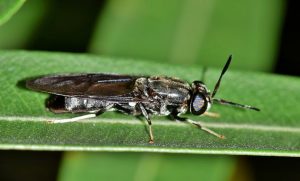 Here’s a fun fact for you: Soldier flies, or stratiomyidae, are known as “true” flies. The reason for this nickname? They have just one pair of wings. Flies that have two pairs of wings, like dragon flies and damsel flies, are not “true” flies!
Here’s a fun fact for you: Soldier flies, or stratiomyidae, are known as “true” flies. The reason for this nickname? They have just one pair of wings. Flies that have two pairs of wings, like dragon flies and damsel flies, are not “true” flies!
The size and color patterns serve to distinguish soldier flies from one another. South American varieties are known for their females’ bright metallic blue color. On the other hand, North American varieties have yellow and black striping that resembles soldiers’ uniforms (and which may have led to their name!).
First, Some Insect Features . . .
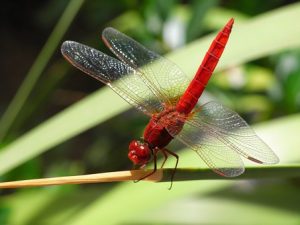 With over 1 million different described species, there’s a lot to learn about insects! All of them share certain basic characteristics, including a three-part body, three pairs of legs, compound eyes, and one pair of antennae! And while all bugs are insects, not all insects are bugs!
With over 1 million different described species, there’s a lot to learn about insects! All of them share certain basic characteristics, including a three-part body, three pairs of legs, compound eyes, and one pair of antennae! And while all bugs are insects, not all insects are bugs!
Fascinated by brightly colored insects? Be wary! Appearances can be deceiving. Think of those brilliant hues (particularly yellow, orange, or red, when paired with black) as nature’s warning, and keep away!
Whether you’re looking for fun facts, resources to support your insect and arthropod unit, or tips on starting your own insect collection, information abounds!
. . . then Focus on Habitat!
Once you’ve covered insect feature, then focus on habitat. Explore the environments in which different insects thrive. Study the construction of insect homes by building a beehive, or have your students try their hand at a variety of activities via a ready-made booklet!
Follow up with a chat about insects’ role in the environment. Some are friends, and some are foes. Have your students identify some of those pesky insects and create “Wanted” posters. Complete with a large illustration and some basic information, they’ll make some interesting wall decor in your classroom!
Activities Abound — Assessments, Experiments, and More!
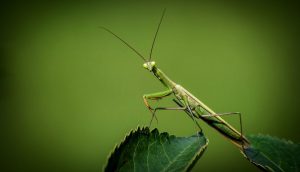 Armed with all this newfound knowledge, you and your students are likely feeling well-informed on insects. So why not assess your crew with an interactive activity! See if they can determine whether insect information is fact or fake.
Armed with all this newfound knowledge, you and your students are likely feeling well-informed on insects. So why not assess your crew with an interactive activity! See if they can determine whether insect information is fact or fake.
Or focus on the visual! Test your students’ observation skills and see if they can find some insects who are masters of disguise.
Looking for some hands-on activities? Run a simple experiment to identify ants’ favorite foods or provide your students with an insect’s perspective and let them see the world as a fly does!
Creative Cross-Curricular Connections!
There’s always the opportunity to make some cross-curricular connections as you explore entomology! You can bring math into the mix. Once you’ve completed an insect study or experiment, create a bar graph to share your findings.
Or, fet artsy! Give your students time to examine insect drawings; they may be inspired to create their own! Then throw some ELA into the mix! Have your students use the information they’ve learned about the environments in which different insects thrive to create a travel brochure to lure insects to specific habitats!


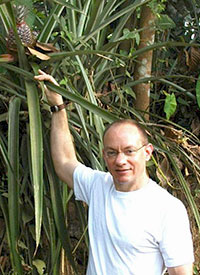

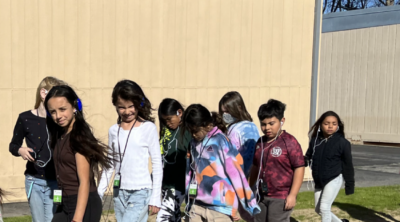

Leave a Reply